Growing "Basket" Willow. Myriad Uses On The Farm With These Named Varieties
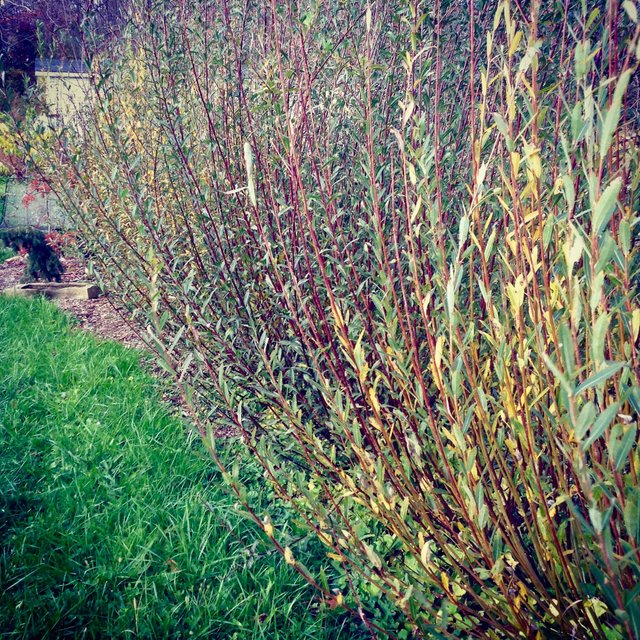
Many are familiar with wild willow, but did you know there are some fantastic named varieties of "basket" willow?
Some of them bear names such as "Britzensis" and "Polish Purple"; they've been propagated and bred intentionally for their long straight rods, with very little branching, making them ideal for construction of all kinds. Some max out at about 6 to 7 feet tall and some of the tallest varieties grow to 10 feet or so... Some have thin diameters and some thick.
These are ideal for "living willow" construction such as fences, baskets, trellises, and so much more! These varieties of willow also make beautiful hedges and windbreaks. They're non-invasive, and they have a neat, tidy clumping growth habit.
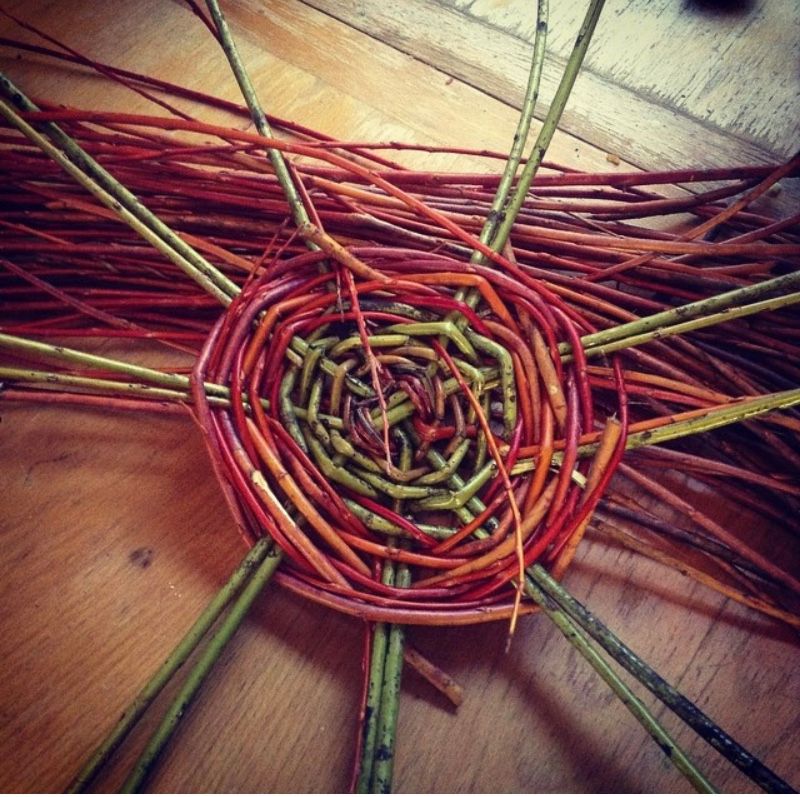
During the summer they have the typical, well-loved "breezy" rods covered in leaves which make it a great seasonal shade- providing plant and wind break. (We appreciate a little bit of late afternoon shade on our lettuce plants in the summer, so we will plant lettuce on the east side of the willow hedge.
In winter when most other color is lacking, these willows can offer interest in the garden and landscape by their wide range in color depending on the variety- from lime green, gold, bright coral red, deep red, brown and black...
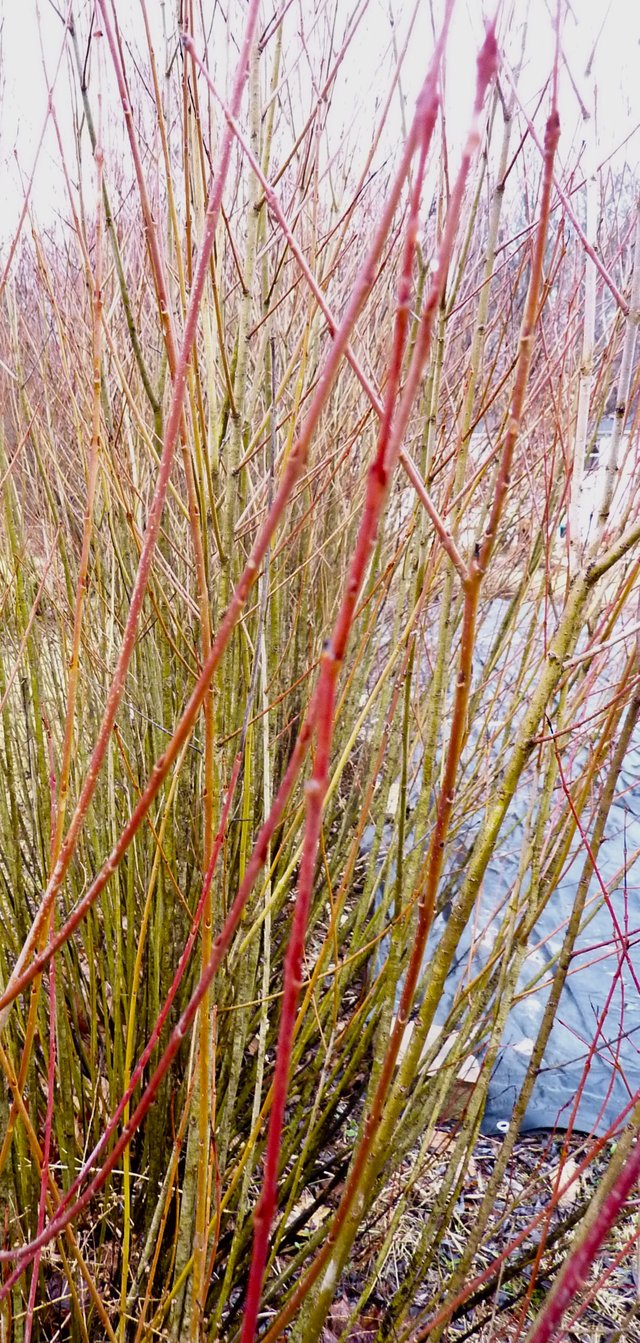
We are growing about 8 different varieties currently. They are EASY to grow!
Start with cuttings, these can be ordered from this wonderful site called Dunbar Gardens. When they arrive in the mail you will either store them for a short period of time in the refrigerator or plant them right away. The best time of year to plant them is in early Spring.
It is best to prepare your planting site by smothering weeds and layering on some quality manure and mulch of some kind (straw, woodchips, etc)... If it is very compacted soil, you might need to break it up with a digging fork or tiller.
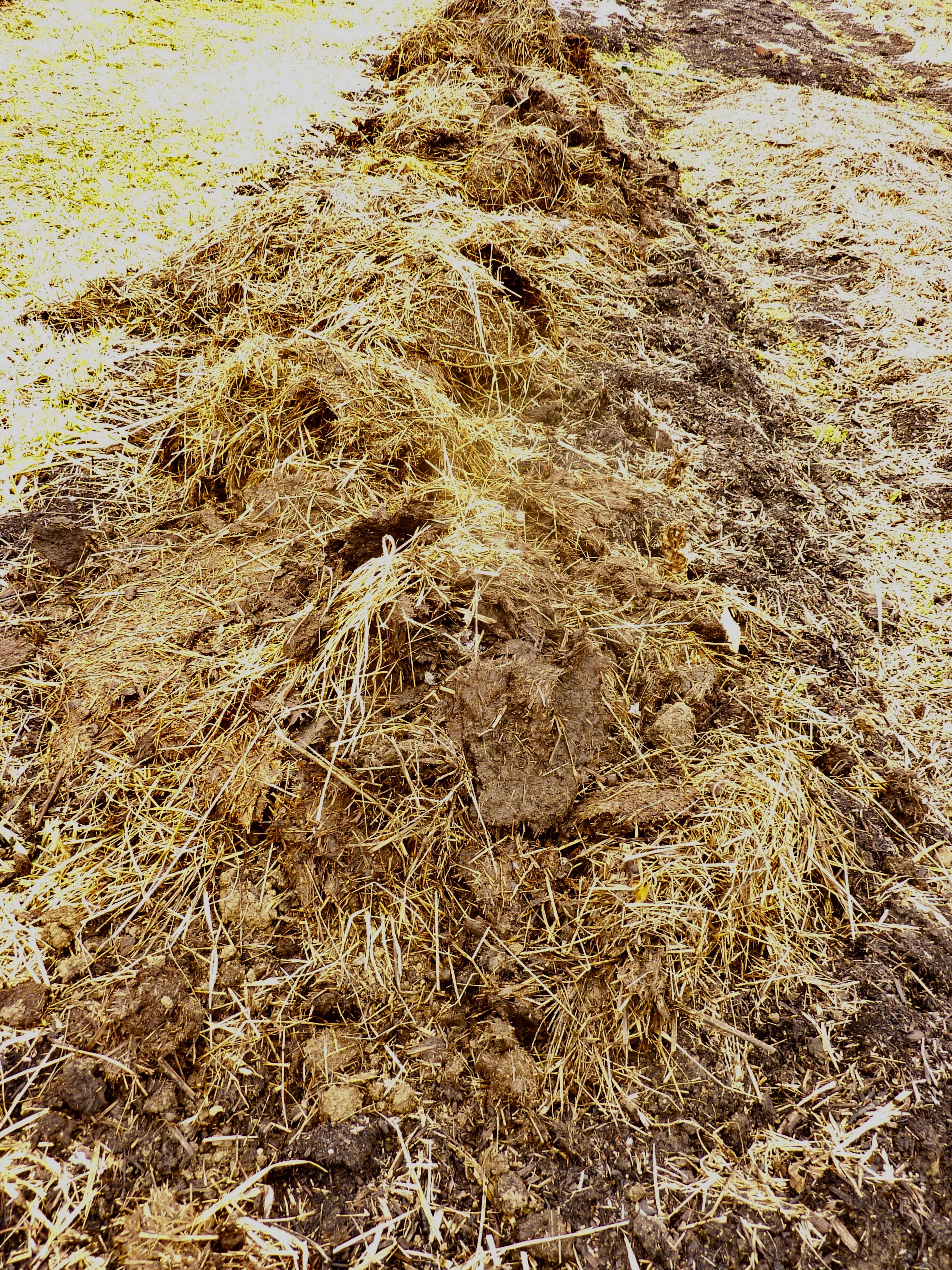
The cuttings will look like little 12 inch long sticks. You will see their tiny buds pointing upward and clinging to the stick. Push each cutting into the soil deep down until just 3 inches of stick remain above ground. Make sure the buds are pointed upwards, not upside down.
These cuttings can be planted about 12 inches apart. I like to plant them in a long row to create a hedge, but you can also plant them individually. Each cutting will grow into a nice size clump. This one little cutting, in it's first year, will grow up to it's maximum height and may branch a little bit. Let it grow for a full two years, and then in it's second winter, you coppice it for it's first time. You will then continue to coppice it every year in late winter.
By coppicing your willow each year, you will be harvesting the rods which can be used for crafting and building. Coppicing also stimulates the plants to put forth a nice bounty of long straight rods for that year. Each year when you coppice the plant, the clump will grow and spread a little bit. Here at our farm, our plants in their third year had grown to be about 10 to 12 inches in diameter- with each clump putting forth close to 50 rods or more.
Now six years later the clumps are about two feet wide and the hedge is quite pretty and full, and there are all the willow rods one could dream of for crafting and building.
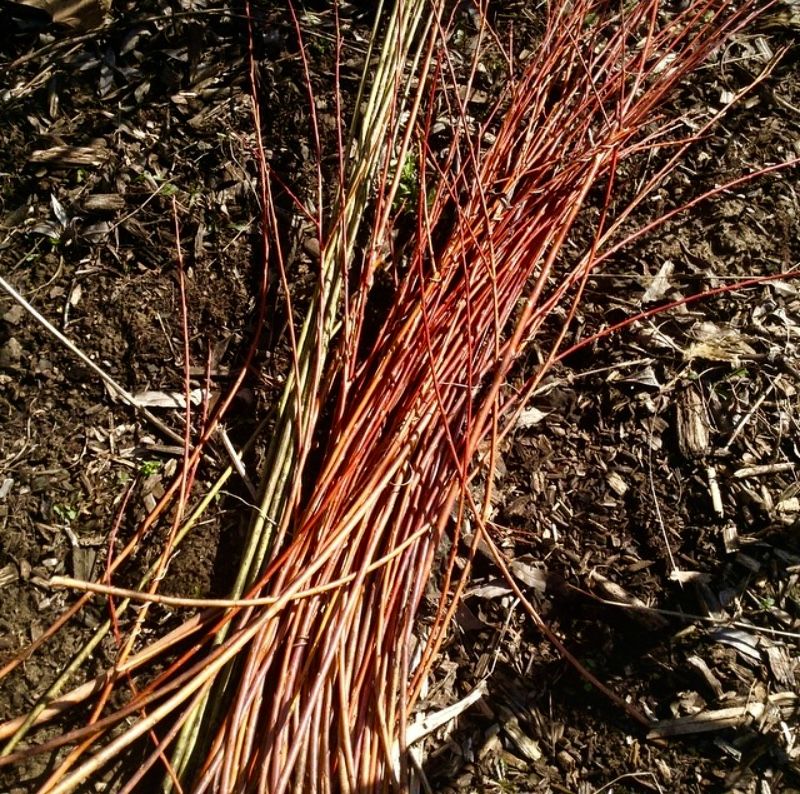
To use the willow rods for basket weaving, it is recommended to cure them by laying them flat or hanging them in the shade for several weeks. Then if you want to weave with them, soak them in water for about three days.
Once you have soaked them again you will need to weave with them right away.
Also, there is still lots that can be done with the fresh cut, un-cured rods. With our tallest varieties I have used them for bean trellises in the garden in a pinch and they work great!
This book shows some amazing crafts and construction that an be created with willow:
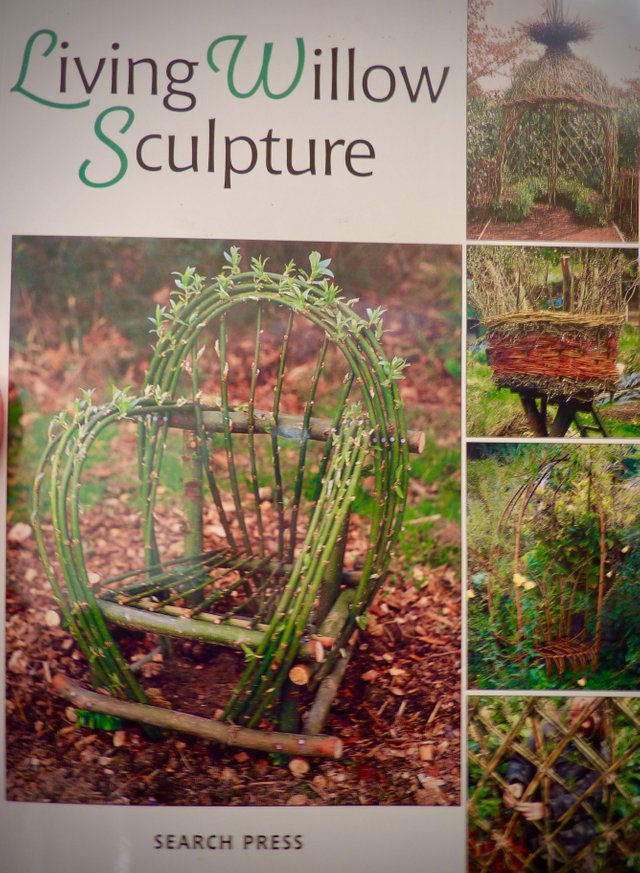
I hope you're inspired to plant some willow on your farm this year!
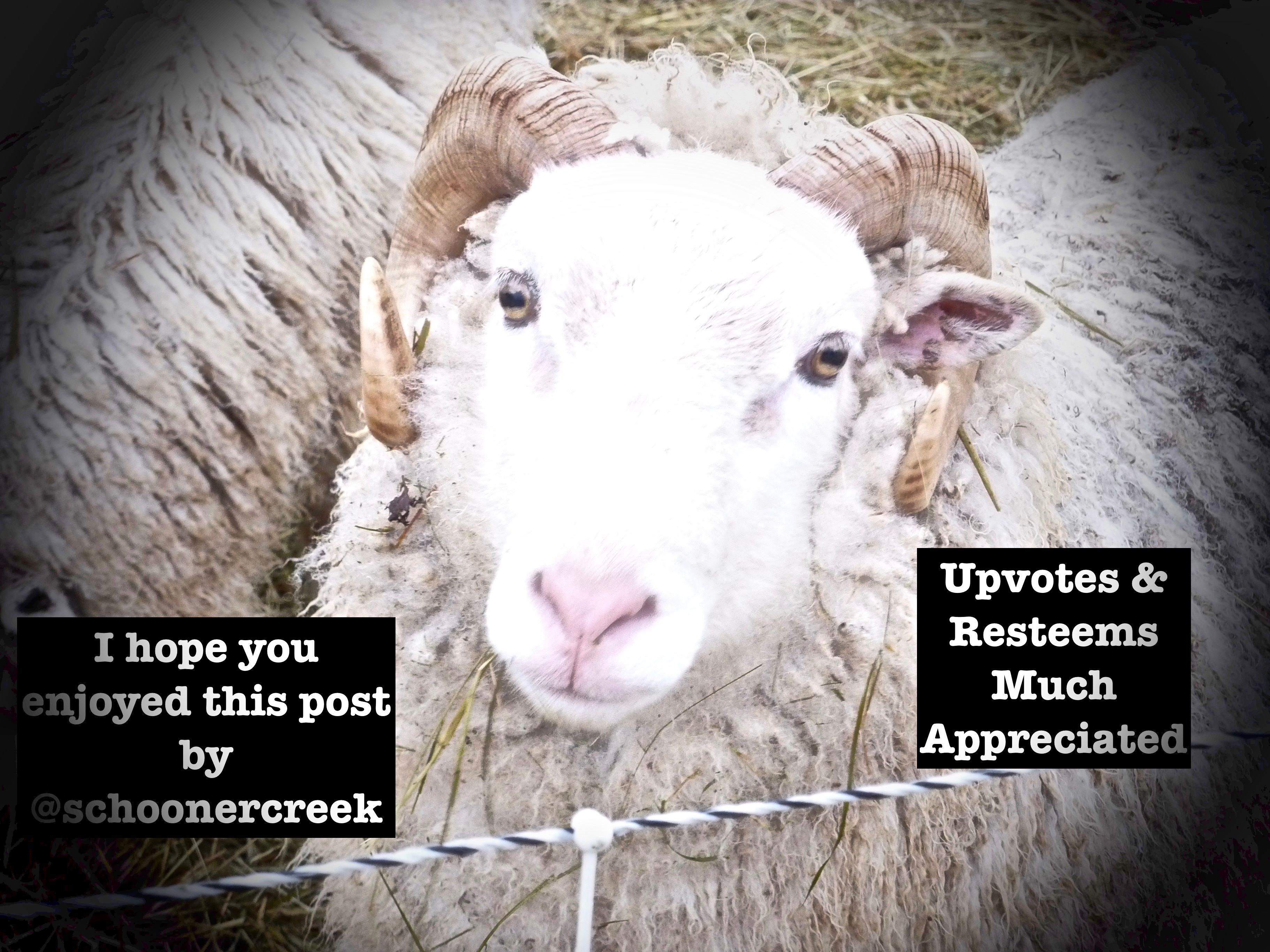
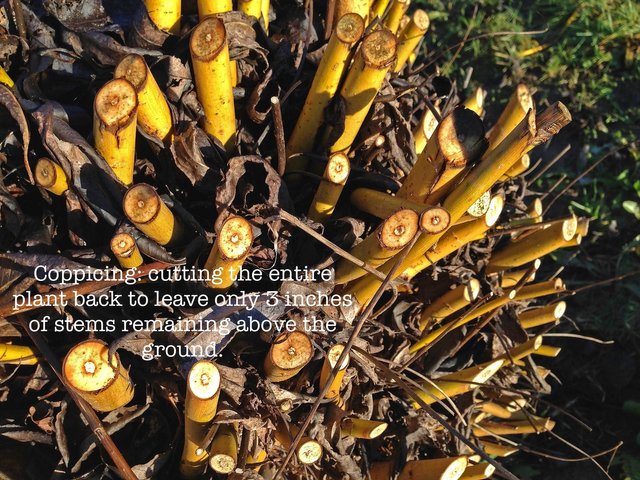
That's really awesome! I was considering planting willow on our property because we have a lot of wet low land that would be perfect for water loving trees. I had no idea all the varieties though. Thanks.
Okay! Great! Yes, one thing I have learned about these named varieties is that they don't necessarily tolerate super wet soils, and that they tend to prefer well drained soils... BUT they may have a variety available that can. Have you grown Red Osier Dogwood? If it isn't invasive where you live you might look into it for your wet area as a substitute.. It does great in wet soils and can be coppiced and treated as willow. The stems may not get 8 feet tall, but closer to 6 they are still great for many uses...
Or you could always plant and coppice wild willow too :-)
Sounds like a fun project!
Thanks for stopping by!
Interesting. The majority of wild willow we have around here seem to prefer damper conditions so I just sort of figured these other varieties would also. Thanks for letting me know that isn't always the case. I looked into the Red Osier Dogwood and it will grow around here so I may have to add it to my list.
Okay cool! Yes I don't really know why the named varieties supposedly don't care for wet soils as the wild willows do... I really like red osiers though!
Good
Thank you for stopping by and reading my post. Glad you liked it.
So so wonderful. I am planning to also plant many willows. For basketry is one use, but also because they are such massive bio mass producers and also good coppice / pollard wood for our Rocket Mass Heater.
Awesome, yes they are such givers! So many uses! I didn't even mention the medicinal qualities!! Do you have a good source to order some named varietals? You are in Spain, yes?
No, no sources yet and I am in Portugal, so ordering from Spain would work. Can you advice me on a good source?
Ok I thought you were somewhere on the Iberian... I don't currently have sources, unless Dunbar Gardens will ship overseas ( they might!) The link is in the blog post. If I find something more I will let you know!
Well Portugal is right on the iberian peninsula. You got it right! With the gigantic Atlantic ocean righ in front of our noses :D
Ahhhh, sounds absolutely marvelous.... I can almost smell the salt sea now...
I love living willow sculpture 💗 when I was teaching we used to have the children participate too. One day I hope to live somewhere where we can plant willow in our garden 💗
Oh working with willow with kids is so wonderful! I have a goal of one day making my kids a living willow fort!
I very much look forward to seeing your progress pics. That would be so so cool.
Oh please do some more basket weaving posts!!! This is so crazy cool:)
will do! Thanks for reading!
We have lots of willows on our property but none in the colors you display above! Gorgeous @schoonercreek! When I walk the quarter mile (one way) to our mailbox, I look at all the plants that I could make a basket with. Thanks for this inspiration, my dear. Take care!
Thank you for stopping by! Baskets, wreaths, any little thing. Sometimes it can be good to just harvest a few shoots and play around with them. It is a good way to connect with the plant and get to know it!
P.S. Have you ever seen the "living" fencing that people make with willow? It can spread pretty quickly so I would be hesitant to plant it but I like the idea of making a living fence. :-)
Yes! One thing I like about these willow varieties is that they have a clumping growth habit, so they aren't invasive. They tend to stay right where you put them...Dunbar Gardens, as I said, has such an awesome selection... It's worth seeing their lovely website even if you don't plan to order the cuttings. Thanks for stopping by and reading!
Thanks for sharing this. Here is a pussywillow I grow.
And a curly willow.
Eventually these will be styled for bonsai.
In the Spring and Summer, I'll be posting more photo updates here on Steemit. There are various bonsai trees I grow.
That chair is pretty interesting. A living trellis would be a great idea for growing vine veggies on.
Oh nice! Thank you! The appreciation of Bonsai is in my family history. My grandfather and my mother were collectors and they both did some Bonsai... Mostly with Japanese maples. Willows would be fun to work with... I will check out your bonsai posts!
You just demonstrated a skill in this post that I WOULD LOVE to learn!
I have a fascination with making baskets!
Ohhh! I would like to do some more basket weaving posts! Thank you @goldendawne!
Yes, please do some basket weaving posts! I’ve wanted to learn basket weaving for the longest time.
okie dokie!
Yes, please do. I would love to add posts like those to Sotall. It would help so many people!
Ok great! Thank you!
Please do!!! I would love to learn this skill.
The hardest thing I thought would be is the soaking of the material, and that possibly expensive specialty tools are needed.
Well I personally haven't needed any special tools at all besides some clamps and a good sharp knife... As for soaking, a pool in a creek, or a fresh pond, or a really large (55gallon) barrel can work! Now I will be planning this next basket-weaving post, thanks for the inspiration!
No thank you!!!! I'm looking forward to the next one!!
great post @schoonercreek. I did not know this:
Thanks for enlightening me! My neighbor's willow nearly tipped over (35 ft tall) last year after our horrible flooding. I decided to take some cuttings from it- so so easy obviously, as willow has natural rooting hormone in it!- and plant one. It's obv a large growing variety, it would be nice to have one of these varieties of which you speak. Thanks for the details on how to buy the cuttings and some variety names <3
Oh thank you for stopping by and reading! Yes! I had always wanted to work with wild willow, and I did a little bit years ago. Once I realized Dunbar Gardens and the named varieties though, it changed my world...
I am about to coppice ours soon, as they seem to be trying to bud out earlier each year!
Ach! I seem to always forget to put something in there, thank you for noting the rooting hormone naturally occurring in willows!!
I have thought before that it would be interesting to powder the willow and add it to potting mixes to stimulate root growth, or to use on other types of cuttings...
yes to the powdering!! that's a great idea. i sometimes just put some willow in the water and then use that water to root other things. seems to work, but the powdering would take it to the next level ;)
Oh thats a great idea!